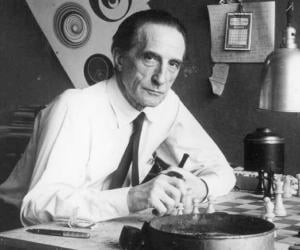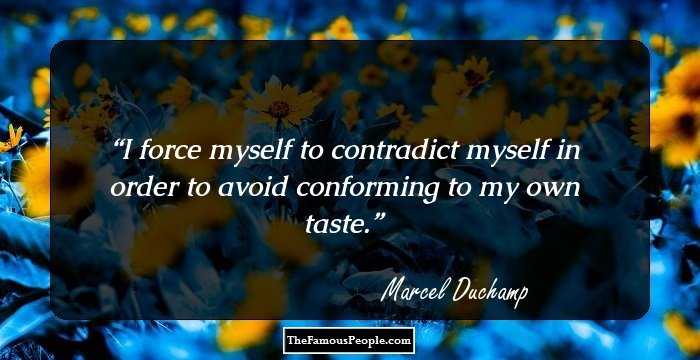
I force myself to contradict myself in order to avoid conforming to my own taste.
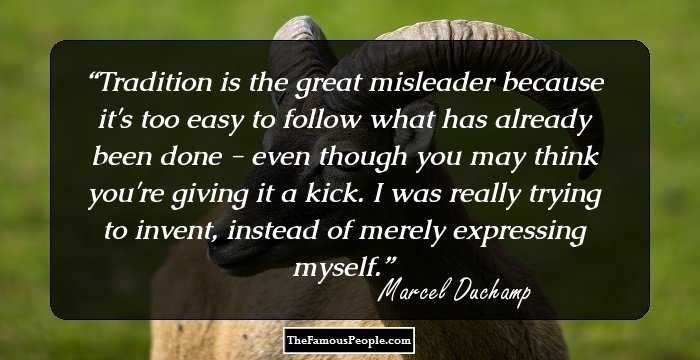
Tradition is the great misleader because it's too easy to follow what has already been done - even though you may think you're giving it a kick. I was really trying to invent, instead of merely expressing myself.
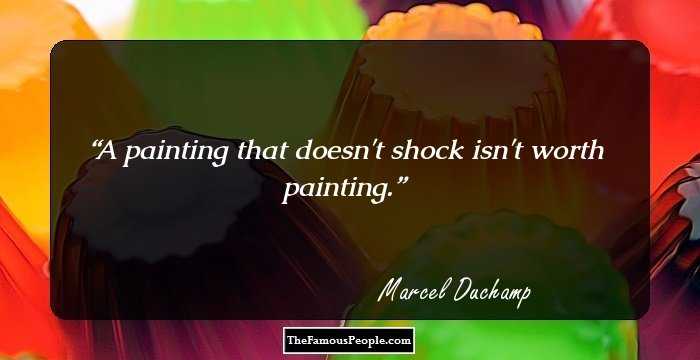
A painting that doesn't shock isn't worth painting.

I am against the word 'anti' because it's a little bit like 'atheist,' as compared to 'believer.' And an atheist is just as much of a religious man as the believer is.
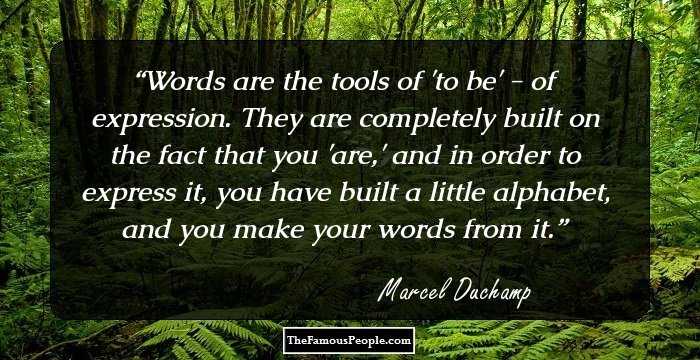
Words are the tools of 'to be' - of expression. They are completely built on the fact that you 'are,' and in order to express it, you have built a little alphabet, and you make your words from it.
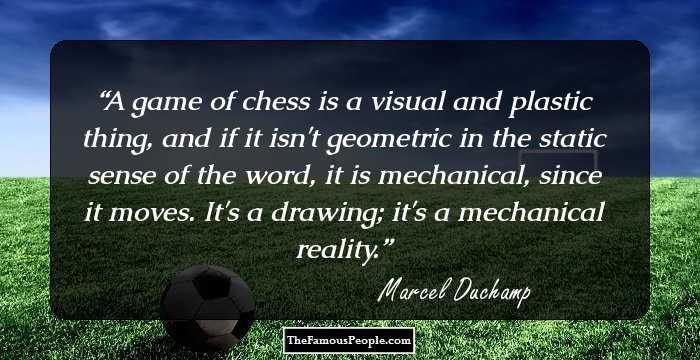
A game of chess is a visual and plastic thing, and if it isn't geometric in the static sense of the word, it is mechanical, since it moves. It's a drawing; it's a mechanical reality.
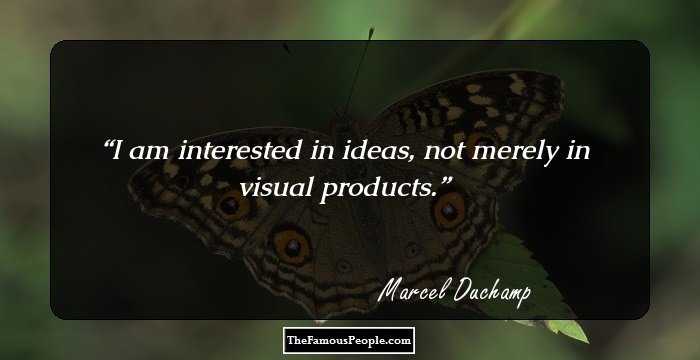
I am interested in ideas, not merely in visual products.
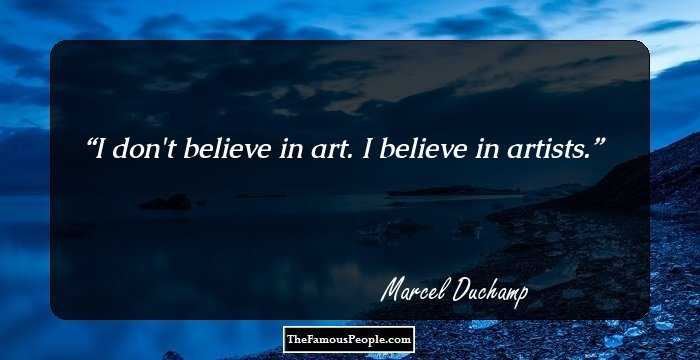
I don't believe in art. I believe in artists.
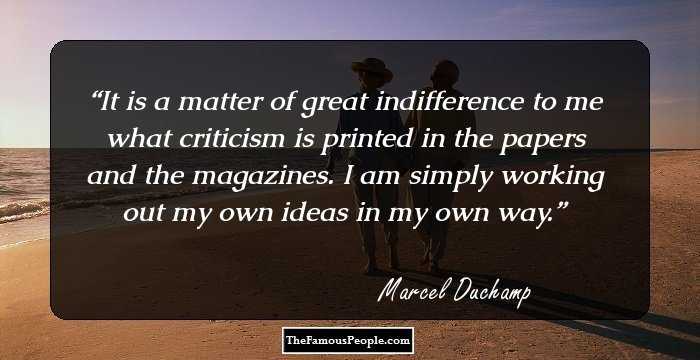
It is a matter of great indifference to me what criticism is printed in the papers and the magazines. I am simply working out my own ideas in my own way.
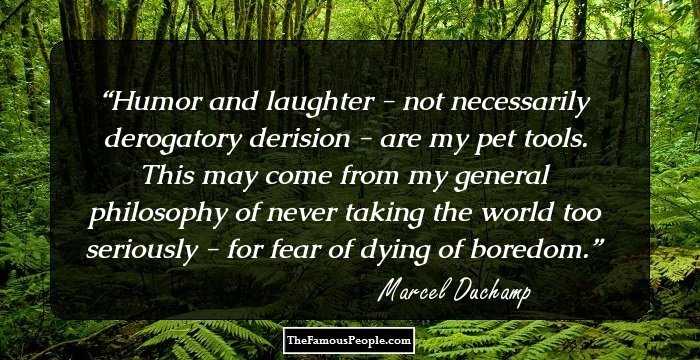
Humor and laughter - not necessarily derogatory derision - are my pet tools. This may come from my general philosophy of never taking the world too seriously - for fear of dying of boredom.
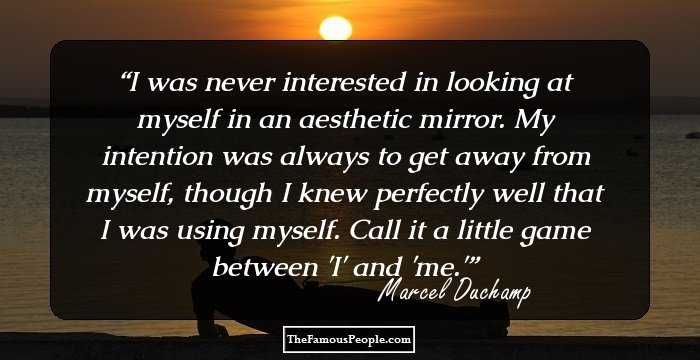
I was never interested in looking at myself in an aesthetic mirror. My intention was always to get away from myself, though I knew perfectly well that I was using myself. Call it a little game between 'I' and 'me.'
One must pass through the network of influence. One is obligated to be influenced, and one accepts this influence very naturally. From the start, one doesn't realize this. The first thing to know: one doesn't realize one is influenced. One thinks he is already liberated, and one is far from it!
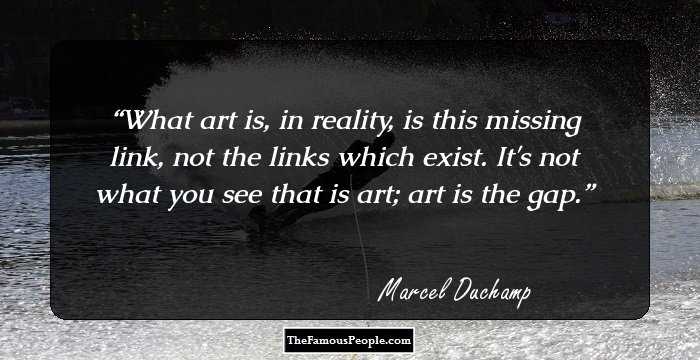
What art is, in reality, is this missing link, not the links which exist. It's not what you see that is art; art is the gap.
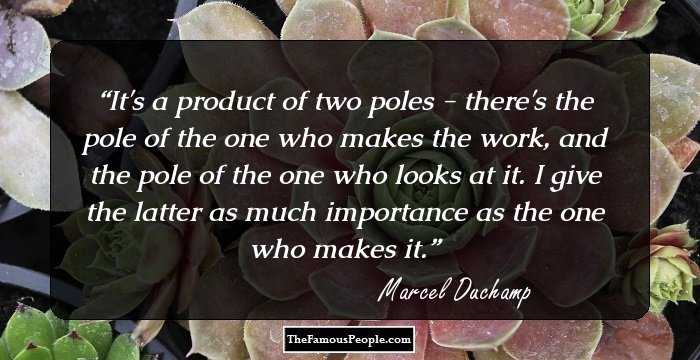
It's a product of two poles - there's the pole of the one who makes the work, and the pole of the one who looks at it. I give the latter as much importance as the one who makes it.
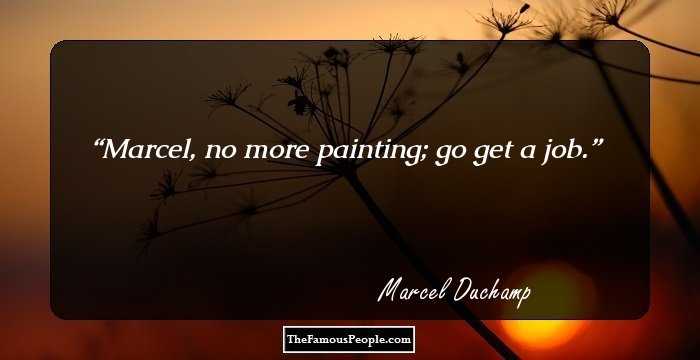
Marcel, no more painting; go get a job.
I haven't been in the Louvre for twenty years. It doesn't interest me because I have these doubts about the value of the judgments which decided that all these pictures should be presented to the Louvre instead of others which weren't even considered.
The last hundred years have been retinal; even the cubists were. The surrealists tried to free themselves, and earlier so had the dadaists, but unfortunately, these latter were nihilists and didn't produce enough to prove their point, which, by the way, they didn't have to prove - according to their theory.
'Art or anti-art?' was the question I asked when I returned from Munich in 1912 and decided to abandon pure painting or painting for its own sake. I thought of introducing elements alien to painting as the only way out of a pictorial and chromatic dead end.
In France, in Europe, the young artists of any generation always act as grandsons of some great man - Poussin, for example, or Victor Hugo. They can't help it. Even if they don't believe in that, it gets in their system. And so when they come to produce something of their own, the tradition is nearly indestructible.
I refused to accept anything, doubted everything. So, doubting everything, I had to find something that had not existed before, something I had not thought of before. Any idea that came to me, the thing would be to turn it around and try to see it with another set of senses.

My stay in Munich was the scene of my complete liberation.
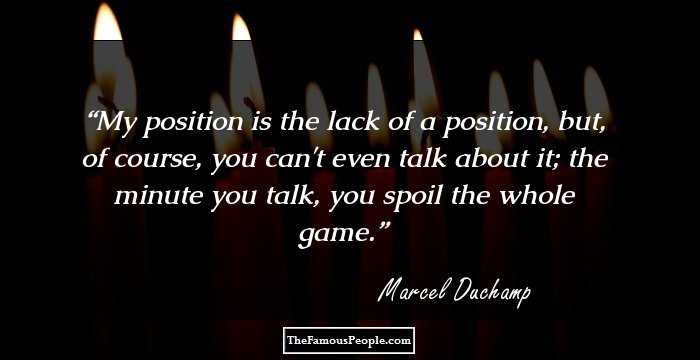
My position is the lack of a position, but, of course, you can't even talk about it; the minute you talk, you spoil the whole game.
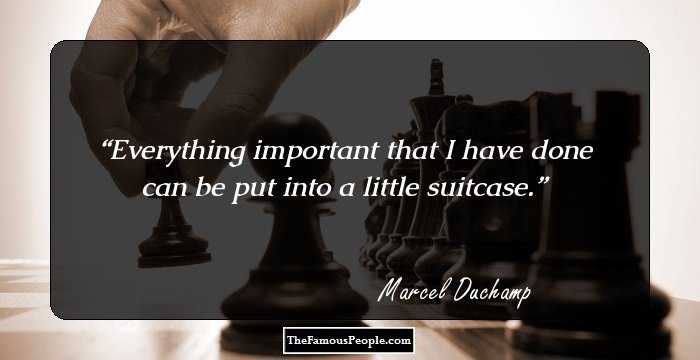
Everything important that I have done can be put into a little suitcase.
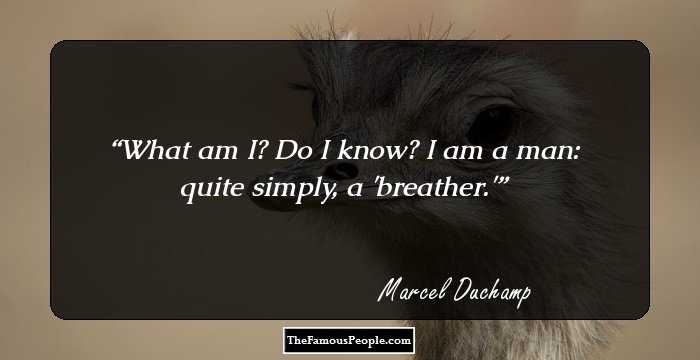
What am I? Do I know? I am a man: quite simply, a 'breather.'
Rational intelligence is dangerous and leads to ratiocination. The painter is a medium who doesn't realize what he is doing. No translation can express the mystery of sensibility, a word, still unreliable, which is nevertheless the basis of painting or poetry, like a kind of alchemy.
One does not contemplate it like a picture. The idea of contemplation disappears completely. Simply take note that it's a bottle rack, or that it's a bottle rack that has changed its destination... It's not the visual question of the readymade that counts; it's the fact that it exists, even.
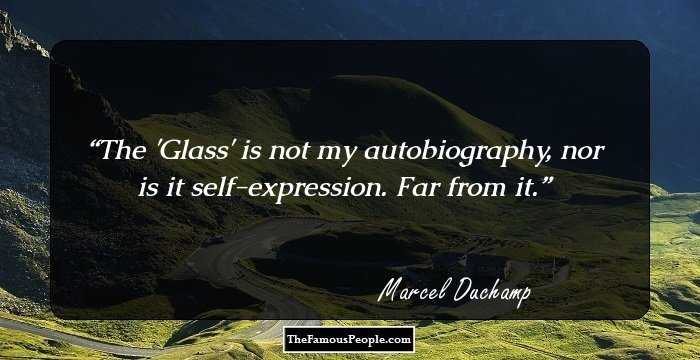
The 'Glass' is not my autobiography, nor is it self-expression. Far from it.
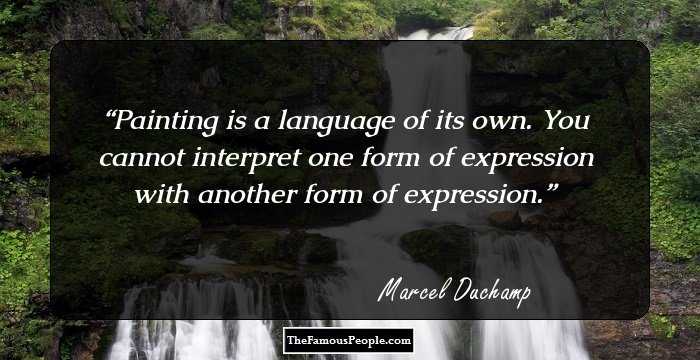
Painting is a language of its own. You cannot interpret one form of expression with another form of expression.
When I put a bicycle wheel on a stool, the fork down, there was no idea of a 'ready-made' or anything else. It was just a distraction. I didn't have any special reason to do it, or any intention of showing it or describing anything.
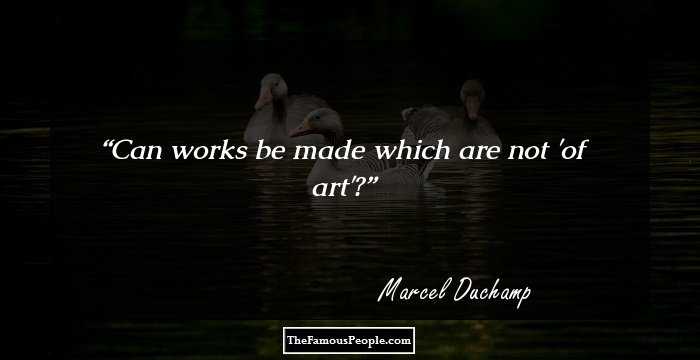
Can works be made which are not 'of art'?

